When you’re weighing wireless vs. wired security systems, the choice really boils down to one thing: flexibility versus reliability.
Wireless systems are all about simple, DIY-friendly installation and easy smart home integration. This makes them a fantastic choice for renters or anyone in a modern home who wants to get up and running quickly. On the other hand, wired systems are the traditional powerhouse—a permanent, incredibly reliable, and tamper-resistant solution for homeowners who want a true “set it and forget it” setup.
Understanding the Core Differences
Choosing the right security system isn’t about a generic pros and cons list. It’s about matching the tech to your home, your lifestyle, and what you plan for the future. While both will absolutely protect your home, the way they’re built creates huge differences in installation, performance, and how you manage them day-to-day.
A wired system becomes part of your home’s infrastructure. Every sensor, camera, and keypad is physically wired back to a central control panel. This creates an incredibly stable connection that doesn’t care how good your Wi-Fi is, making it a fortress of reliability.
Wireless systems work differently. They use battery-powered sensors that talk to a central hub using radio frequencies like Wi-Fi or Z-Wave. This gives you amazing freedom in where you place devices and makes expanding your system a breeze. Need to add a sensor to a new nursery? You can do it in minutes without drilling holes or fishing cables through your walls—a huge win for anyone who might move or wants to build their system over time.
Key Takeaway: Your decision is a trade-off. Are you after the unmatched installation ease and smart features of a wireless system, or do you need the rock-solid, professional-grade reliability that only a hardwired system can offer?
At a Glance Comparison
This table gives you a quick snapshot of the main differences to get you started. We’ll dig much deeper into each of these points as we go.
| Feature | Wired Security System | Wireless Security System |
|---|---|---|
| Installation | Professional job. It’s invasive, requiring drilling and running wires. | DIY-friendly. It’s non-invasive with minimal tools needed. |
| Reliability | Top-tier. It’s not affected by signal interference. | Good, but depends on signal strength. Can be prone to interference. |
| Flexibility | Low. Components are fixed and a pain to move. | High. Components are portable and can be easily moved around. |
| Power Source | Runs on your home’s main electrical grid with a battery backup. | Components are battery-powered and need changing periodically. |
| Best For | New home builds, large properties, and long-term homeowners. | Renters, smaller homes, and tech-savvy DIYers. |
This guide is designed to go beyond the basics. We’ll get into the nitty-gritty of the technology, compare critical factors like cost and security, and walk through real-world scenarios. The goal is to give you the confidence to pick the system that truly fits your home and your life.
How Each Security System Actually Works

Before we can really get into the weeds of wireless vs wired security systems, it’s crucial to understand how they function at a fundamental level. The technology powering each one is completely different, and those differences are what define their real-world pros and cons for your home.
Think of a wired security system as your home’s central nervous system. Every single component—every door contact, motion sensor, and camera—is physically connected by low-voltage wiring that snakes through your walls and terminates at a central control panel.
This hardwired connection creates a closed and private circuit. The control panel is the undisputed brain of the operation, constantly receiving signals from all its sensors. Since it’s hooked into your home’s electrical system (with a battery backup, of course), it has a constant, reliable power source.
The Anatomy of a Wired System
At its heart, a wired system’s legendary reliability comes from those physical connections. It operates as a self-contained ecosystem, making it incredibly stable and almost immune to outside interference.
- Central Control Panel: This is the command center where all the wires meet up. It interprets signals, sounds the alarm, and dials out to your monitoring service.
- Wired Sensors: Each sensor has its own dedicated, physical line to the panel. This guarantees the signal gets through instantly and without interruption.
- Power Source: The system runs on your home’s AC power, so you never have to worry about changing batteries in a dozen different devices.
For decades, this was the gold standard in home security. In fact, wired systems have a long history of market dominance, holding over 67% market share back in 2021 precisely because of this proven, rock-solid reliability. The hardware-centric model, which accounted for over 69% of the market’s revenue that same year, underscores how much people still value these robust setups.
How Wireless Systems Communicate
On the other side of the coin, a wireless system works a lot like the smart home devices you might already have. Instead of physical wires, all the components talk to each other using radio frequencies (RF) such as Wi-Fi, Z-Wave, or Zigbee.
Each battery-powered sensor wirelessly transmits its status to a central hub. That hub then connects to your home’s internet router, which is how it sends alerts to your phone and communicates with the monitoring center. Good systems will also include a cellular backup, so you’re still protected if the internet goes out.
The biggest difference is the communication path. A wired system uses a dedicated physical highway (the wires), while a wireless system uses shared airwaves (RF signals), which can be subject to interference from other electronic devices in your home.
This reliance on radio signals gives you incredible freedom in where you place sensors, but it also introduces potential issues that wired systems just don’t have. Grasping these core operational differences is the first step in picking the right system, especially since these communication methods are a key part of the larger world of smart home security systems.
Comparing Key Decision Factors
When you move past the core technology, the real-world differences between wired and wireless security systems start to show. This is where the debate gets personal. Your final choice will come down to very practical things like how much work you’re willing to put into installation, what your budget looks like long-term, and how you feel about day-to-day reliability.
Let’s dig into the details to see which system really fits your home and lifestyle.
Installation Effort and Invasiveness
The installation process is where you’ll see the most dramatic difference between these two types of systems.
Installing a wired system is a serious project. Think of it as a minor renovation. A professional has to drill holes in your walls, fish low-voltage cables through your attic and crawlspaces, and physically connect every single sensor and camera back to a central control panel. It’s an invasive process that can easily take a full day, sometimes longer, depending on your home’s size and layout.
Wireless systems are the complete opposite. They are built for simplicity and speed. Most are designed so you can do it yourself (DIY), often in just an hour or two with nothing more than a screwdriver. Sensors stick to walls and doorframes with adhesive strips, and the main hub just needs to be plugged into an outlet and connected to your Wi-Fi. This hands-off approach is a huge plus for renters or anyone who doesn’t want to make permanent changes to their home.
The contrast in effort, time, and cost is pretty stark.

As you can see, wired systems demand a much bigger investment of both time and money right from the start. Wireless systems, on the other hand, are all about getting you set up quickly and affordably.
Cost Breakdown: Upfront vs. Ongoing
The way you pay for each system is fundamentally different.
Wired systems almost always come with a much higher upfront cost. This is mostly due to the professional labor needed for that complex installation, which can easily add hundreds, if not thousands, of dollars on top of the hardware price. But once it’s in, the ongoing costs are often minimal since the system is a permanent part of your home.
Wireless systems flip that financial model. The initial hardware costs are generally lower, and you save a ton on installation by doing it yourself. However, many wireless systems are tied to a subscription for professional monitoring, cloud video storage, and smart features. These monthly fees can really add up, sometimes making the system more expensive over its lifetime.
Key Insight: Don’t just look at the sticker price. You have to weigh the high initial hit of a wired system against the potential for years of recurring monthly fees with a wireless one. A wired system is a capital expense; a wireless system often becomes an ongoing operational expense.
To make this easier to digest, here’s a quick side-by-side look at the most important differences.
Wired vs Wireless System At-a-Glance Comparison
| Feature | Wired Security System | Wireless Security System |
|---|---|---|
| Installation | Professional installation required; invasive and time-consuming. | DIY-friendly; quick and non-invasive with adhesive sensors. |
| Cost Structure | High upfront cost (hardware + labor), low ongoing costs. | Lower upfront cost, often with recurring monthly subscription fees. |
| Reliability | Extremely reliable; immune to signal interference. | Generally reliable but can be affected by Wi-Fi congestion or physical barriers. |
| Security | Vulnerable to cut phone/internet lines; wires are hard to tamper with. | Vulnerable to signal jamming; dependent on a secure home Wi-Fi network. |
| Scalability | Difficult and expensive to expand once installed. | Easy to add new sensors and components at any time. |
| Ideal For | New construction, major renovations, large properties. | Renters, existing homes, users wanting flexibility and smart features. |
This table should give you a solid foundation for understanding where each system shines and where it has its drawbacks.
Reliability and Signal Integrity
When it comes to pure, rock-solid reliability, a wired system is hard to beat. Because every component is physically connected with a cable, it creates a closed-circuit ecosystem. This makes it immune to the kind of signal interference that can sometimes disrupt wireless devices. Your neighbor’s powerful Wi-Fi, your microwave, or even thick walls won’t impact its performance.
Wireless systems, on the other hand, live and die by their signal strength. While modern systems are far more robust than they used to be, they can still run into trouble from:
- Wi-Fi Congestion: Too many devices fighting for bandwidth on your home network can cause issues.
- Physical Obstructions: Thick concrete walls, large metal appliances, or even dense foliage can weaken radio signals.
- Distance from the Hub: Sensors placed too far from the central hub might struggle to maintain a steady connection.
This doesn’t mean wireless systems are unreliable—they’re not. But their stability depends entirely on the radio frequency environment inside your home, a variable that simply doesn’t exist for their hardwired cousins.
Security Vulnerabilities and Tampering
Both systems have their own unique security weaknesses that you should be aware of.
For a wired system, the primary risk is physical tampering. A determined intruder could try to cut the phone or internet line leading into your house, which would sever its connection to the monitoring center. However, the actual wires connecting the sensors to the panel are usually hidden inside walls, making them extremely difficult for someone to find and disable quickly.
Wireless systems face a more modern threat: signal jamming. A sophisticated burglar could use a radio frequency jammer to disrupt the signals between your sensors and the hub, effectively blinding the system. While this is an advanced technique and quite rare, it’s a vulnerability inherent in any wireless technology. A more common risk is a poorly secured Wi-Fi network, which can create a digital backdoor for hackers. Taking time to understand the best practices for IoT security is critical for anyone using a connected wireless system.
The security market is clearly shifting toward more connected and user-friendly solutions. In 2022, the global alarm security market hit a value of USD 8.45 billion, with wireless systems fueling much of that growth. Projections show this market segment growing at 8.12% annually through 2029, largely because people want flexible, cloud-based security that’s easy to install and upgrade themselves.
Performance and Smart Home Integration

A modern security system is more than just a siren and a keypad; it’s often the brain of a connected home. Performance today isn’t just about whether an alarm goes off. It’s about how seamlessly the system communicates with your other smart devices to make life easier and more secure. This is where the wireless vs wired security systems discussion gets really interesting.
Wired systems are the undisputed champions of connection stability. Because every sensor and camera is physically tethered to the main panel, the system is completely immune to the Wi-Fi congestion that can slow down a home full of smart speakers, TVs, and laptops. For large properties or homes with thick concrete walls that kill wireless signals, a wired setup offers unparalleled reliability.
Smart Home Ecosystem Compatibility
On the flip side, wireless systems were born to be part of a smart home. They are designed from the ground up to integrate effortlessly with popular ecosystems like Amazon Alexa, Google Assistant, and Apple HomeKit. This native compatibility unlocks a world of powerful automations that wired systems can’t easily match without some serious workarounds.
Think about these real-world scenarios:
- Coming Home: The wireless sensor on your front door recognizes you’ve arrived, instantly disarming the alarm, turning on the foyer lights, and kicking on the A/C.
- Front Porch Alert: A wireless camera detects motion, and the video feed immediately pops up on your smart TV or an Amazon Echo Show screen.
- Nightly Lockdown: With a simple “Hey Google, goodnight,” your security system arms itself, your smart deadbolt locks, and all the connected lights in the house turn off.
These smooth, intuitive interactions are the superpower of wireless security. This is also a huge reason why the market is shifting. While wired cameras recently held a 51.0% market share, the wireless segment is expected to explode, growing at an incredible 23.3% CAGR between 2025 and 2033. This surge is fueled by the demand for easy setup and smart features, with studies showing 67% of users pick wireless for its DIY-friendly nature.
Key Differentiator: Wireless systems deliver an intuitive, out-of-the-box smart home experience, making powerful automations simple. Wired systems prioritize pure signal stability and often need extra hardware to achieve the same level of smart integration.
Bridging the Integration Gap
While wireless systems are built for connectivity, wired systems aren’t entirely cut off from the smart home party. Many manufacturers now offer specialized hubs or modules that act as a translator, bridging the gap between a hardwired control panel and wireless protocols like Z-Wave or Zigbee.
These add-ons let a rock-solid wired system talk to smart locks, lights, and thermostats. The experience, however, isn’t always as polished as it is with a native wireless system. The setup can be more technical, and the list of compatible gadgets might be shorter.
For a homeowner who puts ironclad security above all else but still wants some smart conveniences, this hybrid approach is a great compromise. It gives you the fortress-like reliability of a wired system while adding a functional, if less fluid, link to your smart home. This approach to connectivity is a key part of embracing the future of smart home technology.
Ultimately, the best choice boils down to your priorities. If you envision a deeply integrated smart home where your security system orchestrates countless automated routines, a wireless system provides a much more direct and user-friendly path. But if your number one concern is flawless, interference-proof security for a large or challenging property, a wired system remains the top performer—even if its smarts take a little more effort to unlock.
Which System Is Right for Your Home?

The debate over wireless vs wired security systems gets a lot simpler when you stop thinking in hypotheticals and start looking at real-world situations. To figure out what’s best for you, let’s walk through a few common scenarios. See which one sounds most like your own home and needs.
The Apartment Renter
If you’re renting, the choice is pretty much made for you. Most lease agreements have strict rules against drilling holes and running wires, which immediately rules out a traditional wired system.
This is where a wireless security system shines. The sensors and cameras attach with adhesive strips, so there’s no damage to the property. Even better, when your lease is up, you can just pack the whole system up and take it with you. It’s an investment in your security, not your landlord’s property.
The New Home Builder
Building a new home gives you a unique advantage. With the walls open and everything exposed, it’s the perfect time to run wiring for a security system. What would be a major renovation in an existing home is a simple task during construction.
You can run low-voltage wires to every door, window, and potential camera location you can think of. The end result is a completely hidden, rock-solid system that’s built right into your home’s infrastructure. For new builds, a wired system offers unmatched reliability and a clean finish that’s nearly impossible to achieve later on.
Installing a wired system during construction is about more than just convenience; it future-proofs your home’s security. You get a tamper-resistant foundation that never needs batteries and provides decades of worry-free protection.
The Tech-Savvy DIY Homeowner
This person loves smart home gadgets and enjoys the process of setting things up themselves. They want a system that integrates seamlessly with their smart speakers, lights, and other connected devices.
A wireless system is the obvious answer. Most are designed for easy, tool-free installation, making for a perfect weekend project. They’re also built to work with platforms like Alexa and Google Assistant, unlocking all sorts of automation possibilities. For this homeowner, the flexibility to add a new sensor or camera whenever they want is far more valuable than the permanence of a wired setup.
The Rural Property Owner
Living on a large, rural property presents unique challenges. The internet might be spotty, and outbuildings like barns or workshops can be too far for a Wi-Fi signal to reach reliably. For this owner, consistent, dependable operation is non-negotiable.
A wired security system is the clear winner here. Its physical connections aren’t affected by Wi-Fi dead zones or interference. Wires can easily run hundreds of feet to secure detached garages or sheds, something wireless systems struggle with. The self-contained, robust nature of a wired system ensures the entire property stays protected, 24/7, no matter what.
Making the Right Choice for Your Home
Choosing between a wired and wireless security system isn’t about which one is “better” in a vacuum. It’s about which one is right for you. Your home, your lifestyle, and your long-term plans are the most important factors in this decision. Think of it less as a tech choice and more as a personal one.
A wired system is all about rock-solid reliability for the long haul. If you’re building a new home or settling in for the foreseeable future, this is your gold standard. The physical connections create a professional-grade setup that you can truly set and forget, and it’s practically immune to the signal drops or interference that can plague wireless devices, especially in larger homes.
On the other hand, wireless systems are the champions of convenience and flexibility. They are the clear go-to if you’re a renter, love a good DIY project, or want your security system to play nicely with your other smart home gadgets. For anyone who values easy setup and the ability to pack up the system and take it to a new home, wireless is tough to beat.
A Few Final Questions to Guide You
To cut through the noise and find the perfect fit, take a moment to answer these practical questions. Your responses will light the path to the best decision.
- What’s my real budget? Don’t just look at the price tag on the box. Factor in the cost of professional installation for a wired system against the potential monthly fees for monitoring or cloud storage that often come with wireless ones.
- Do I want a connected smart home? Are you envisioning a system where your cameras trigger your smart lights, or is a standalone security setup all you need?
- How much maintenance am I willing to do? Be honest. Does swapping out batteries on a dozen sensors every few years sound like a hassle? Or is that a small price to pay for no drilling?
- Am I staying or going? If this is your forever home, a permanent installation makes sense. If you’re renting or might move in a few years, portability is a huge plus.
Your answers here create your personal blueprint. Someone building their dream house from the ground up will prioritize things differently than a student in a one-year apartment lease. The right system is the one that fits that blueprint.
At the end of the day, the best security system gives you peace of mind without becoming a chore. By weighing these points against your own situation, you’ll be able to choose a system that feels like a natural extension of your home—one you can trust for years to come.
Frequently Asked Questions
Even with all the details laid out, a few common questions always seem to pop up when people are on the fence between a wired and wireless system. Let’s tackle those head-on to clear up any lingering doubts.
Can a Wireless Security System Work Without Wi-Fi?
Yes, but with some big caveats. Most quality wireless systems have a cellular backup built-in. If your home Wi-Fi drops, the system instantly switches to a cell signal to stay connected to the professional monitoring service. Your home is still protected.
The catch is that you’ll lose access to features like live video feeds on your phone or instant push alerts. The cellular connection is really just for emergency signals, not for the day-to-day smart features you might be used to.
Key Takeaway: Without any internet or cellular connection, a wireless system just becomes a local noisemaker. It will sound an alarm if a door opens, but it can’t call for help or alert you when you’re not home.
Are Wired Security Systems Completely Hacker-Proof?
Nothing is 100% foolproof, but wired systems come incredibly close when it comes to remote attacks. Since they’re hardwired into a closed circuit, they simply aren’t exposed to the Wi-Fi jamming or network hacking that can sometimes threaten wireless setups.
The real vulnerability of a wired system is physical. A determined intruder would have to find and cut the actual phone or internet line connected to your house to disable it. It’s certainly possible, but it takes a lot more time, effort, and risk than trying to disrupt a wireless signal from a distance.
What Happens to Each System During a Power Outage?
Both types of systems have a plan for power cuts, but they handle them very differently.
- Wired Systems: These rely on your home’s electricity but have a substantial, rechargeable backup battery inside the main control panel. This single battery is powerful enough to keep the entire system—every sensor, keypad, and siren—running for 24 hours or more.
- Wireless Systems: The central hub usually has a smaller backup battery that might last a few hours. While the individual sensors are fine (they have their own batteries), the real problem is your Wi-Fi router, which will also go dark. This makes a cellular backup absolutely critical to stay connected to your monitoring service.
When it comes to a prolonged blackout, a wired system is the clear winner. Its centralized battery is built for endurance, ensuring every single component stays online and keeps your home secure until the lights come back on.
At Automated Home Guide, our goal is to help you navigate the world of smart home technology with confidence. Check out our in-depth guides and honest reviews to find the right solutions for your home. You can find more at https://automatedhomeguide.com.
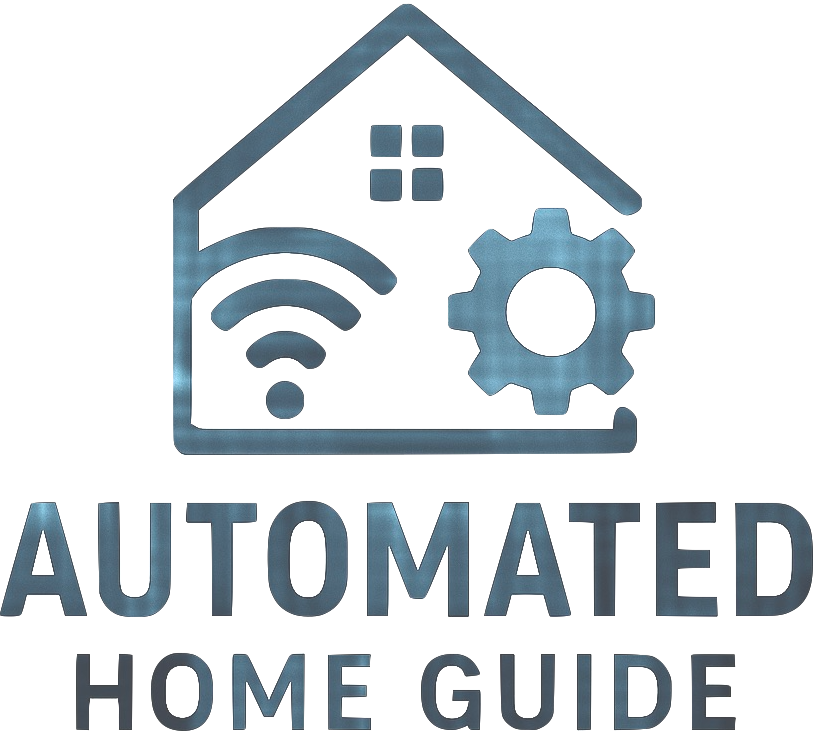
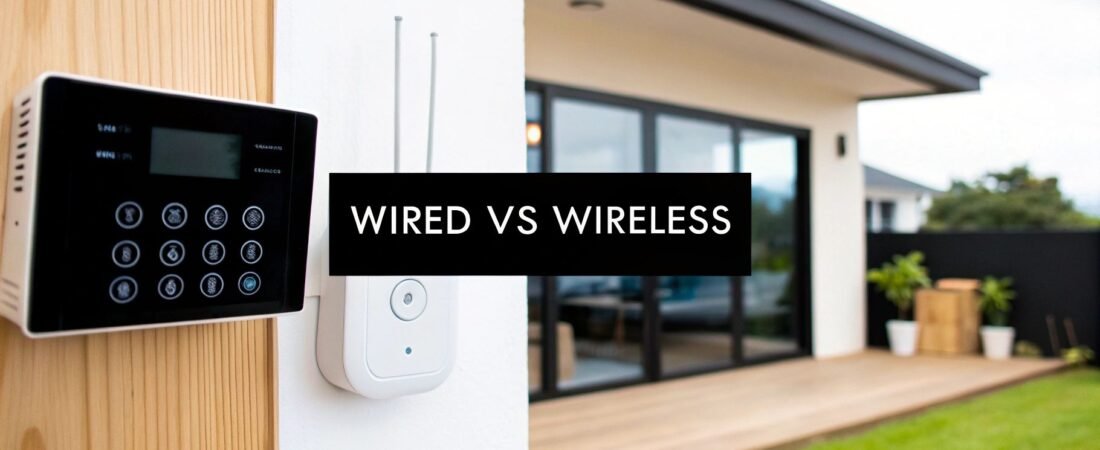
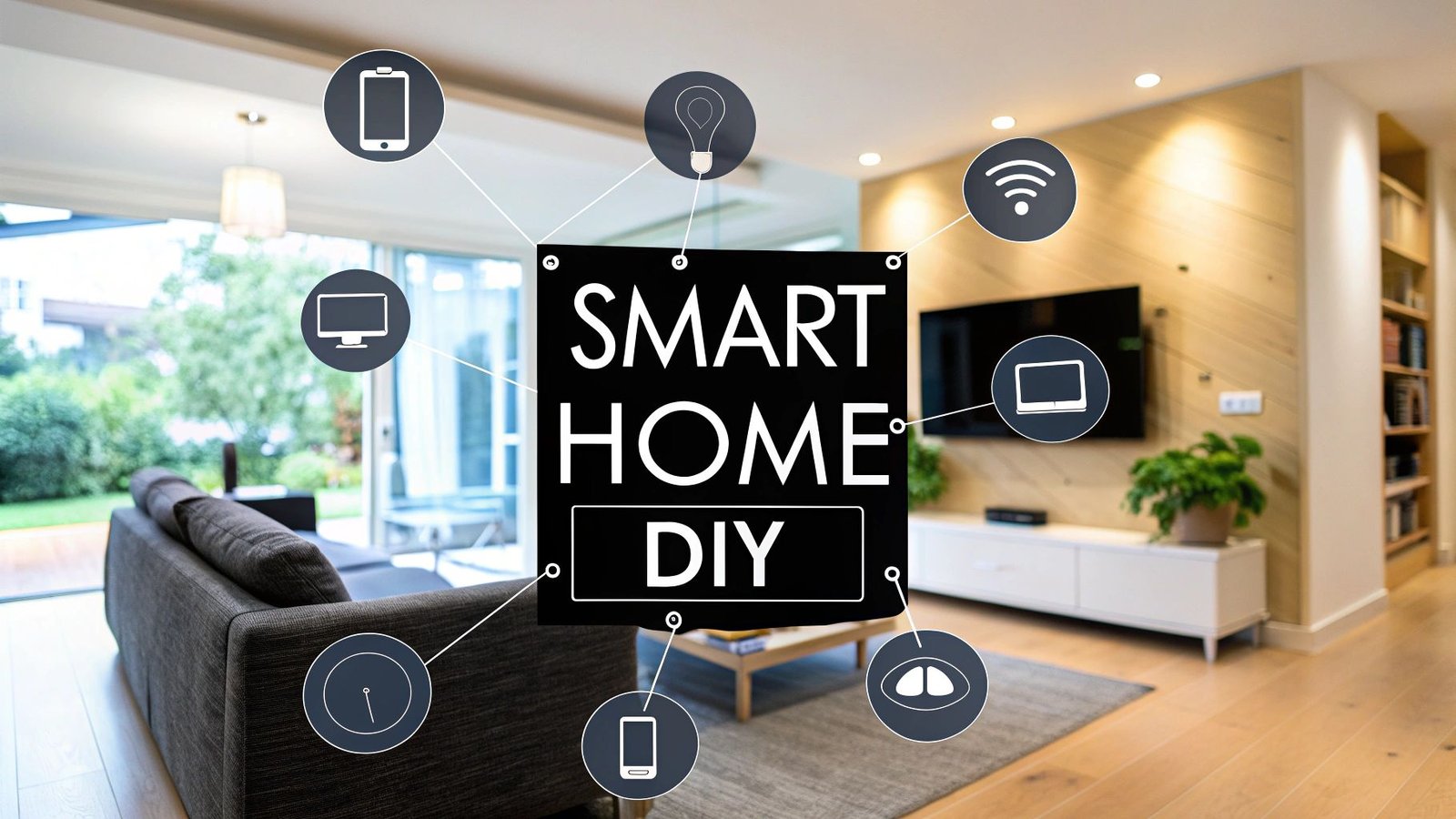
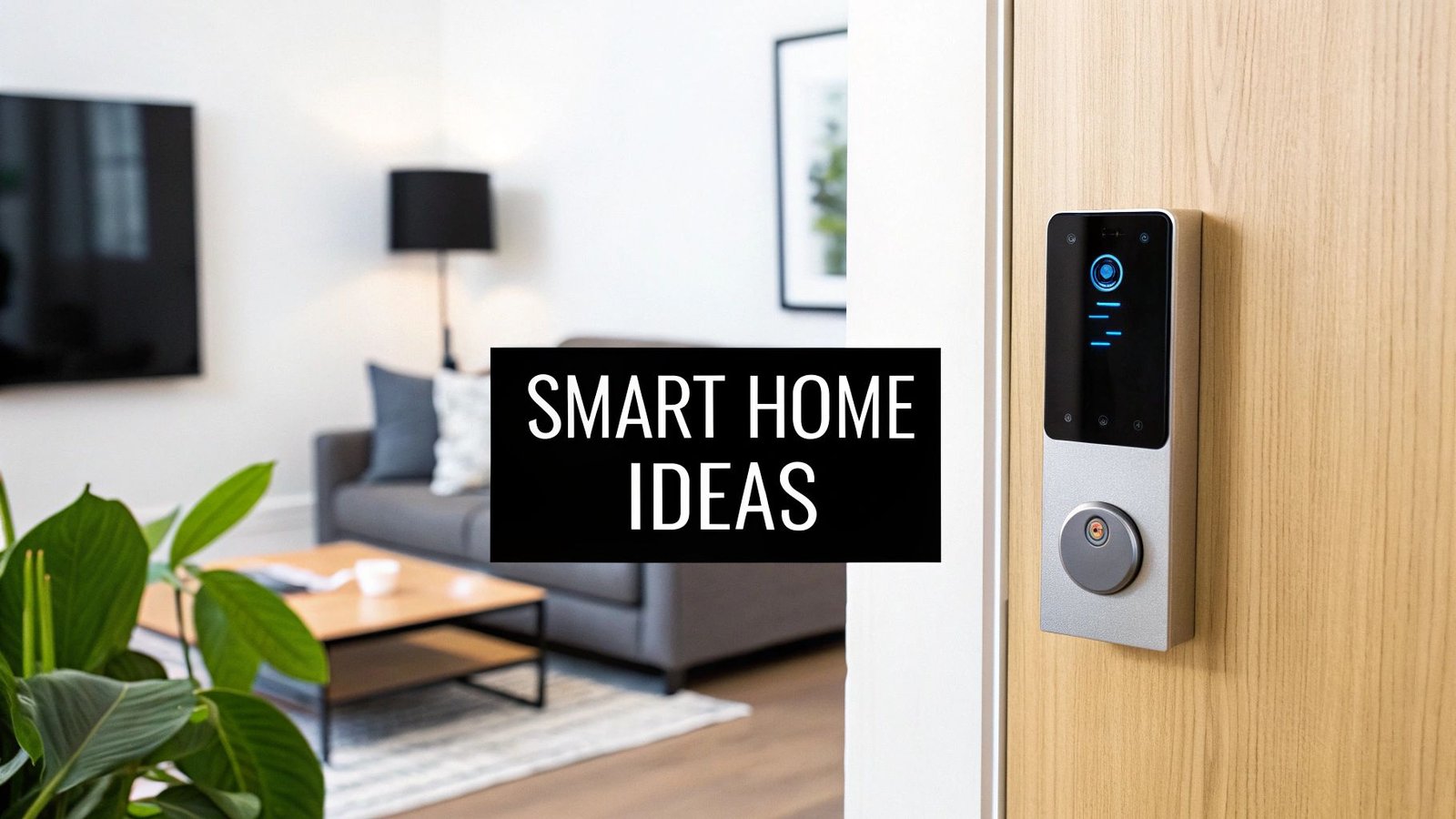

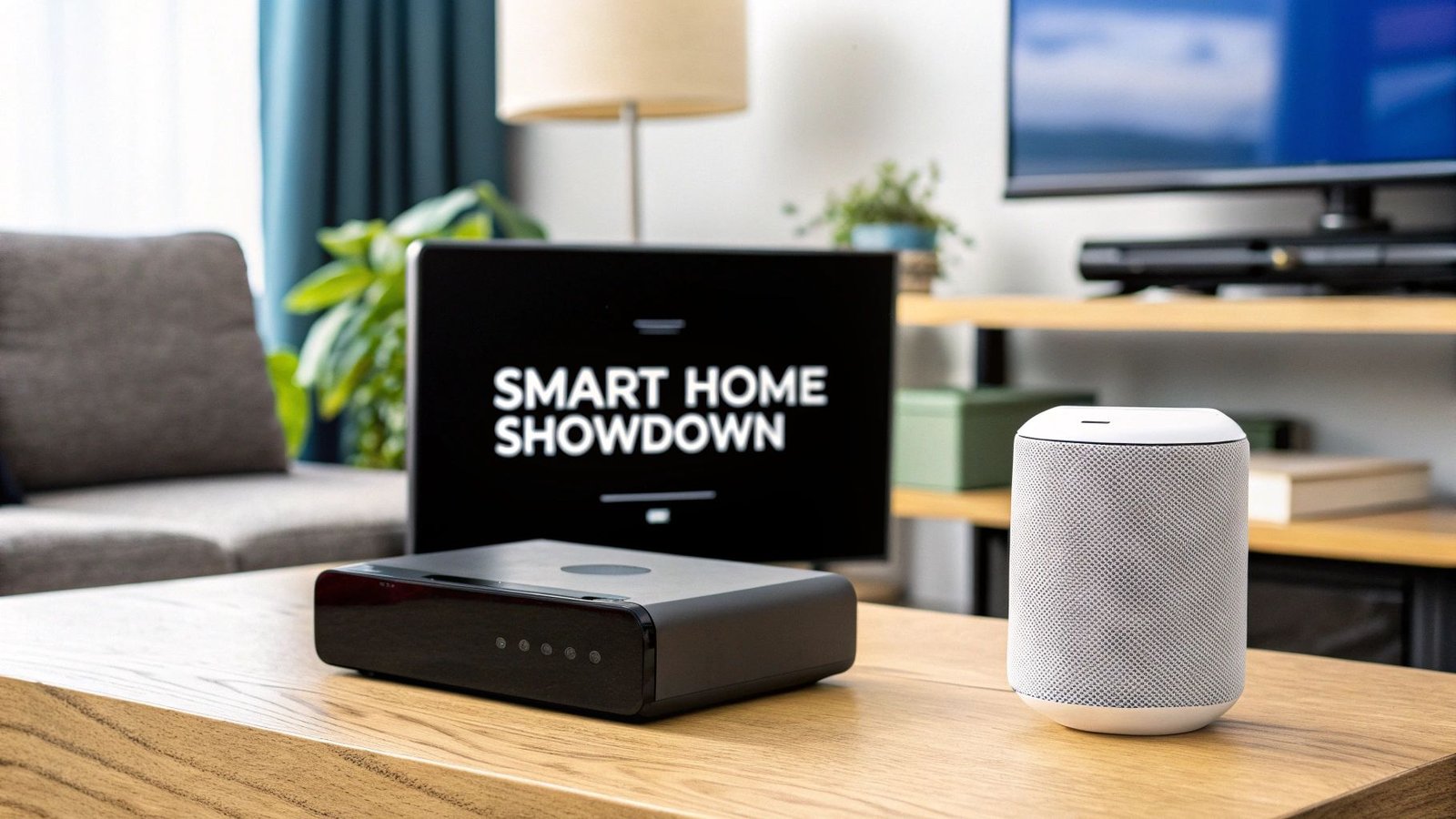


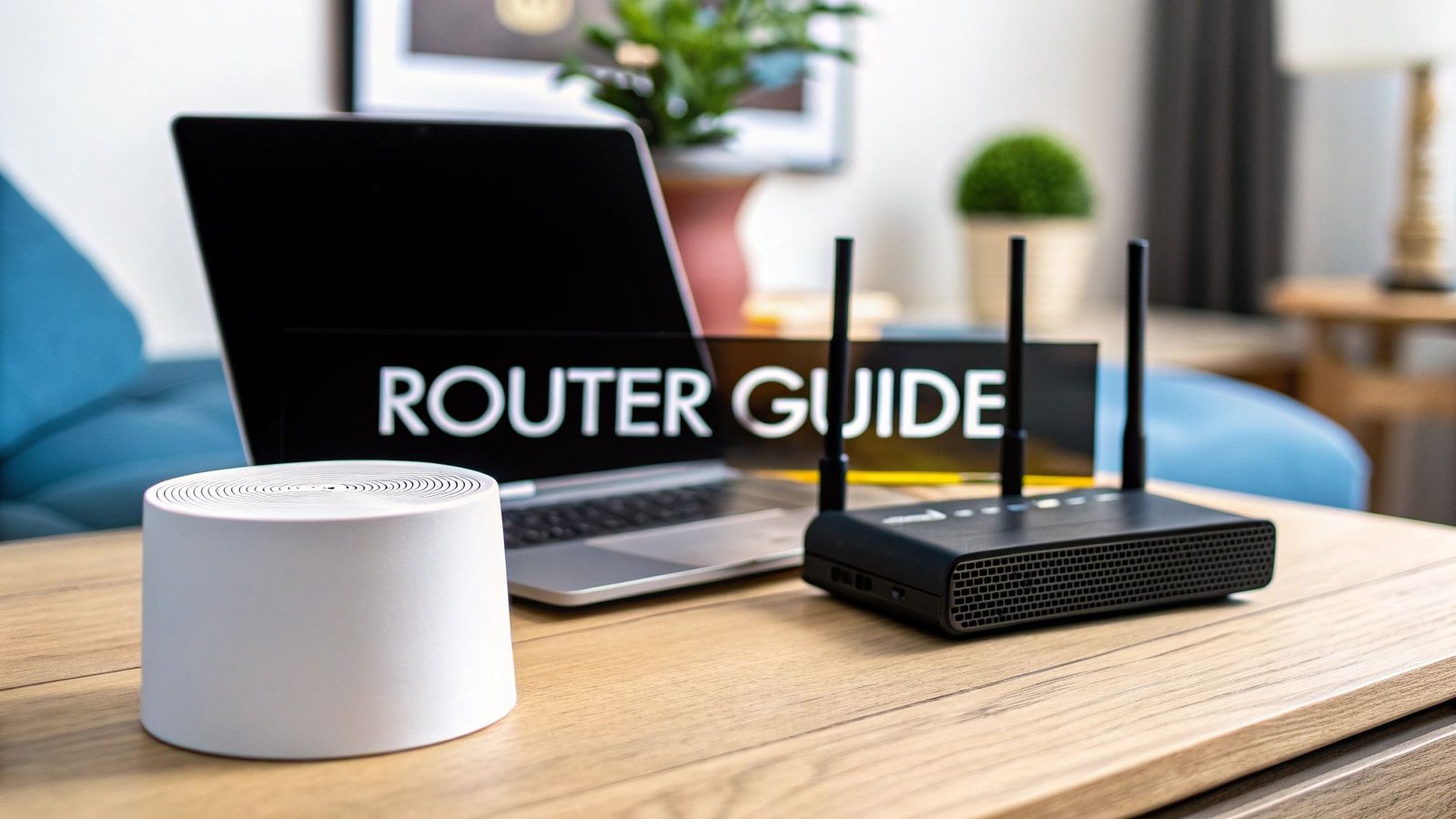

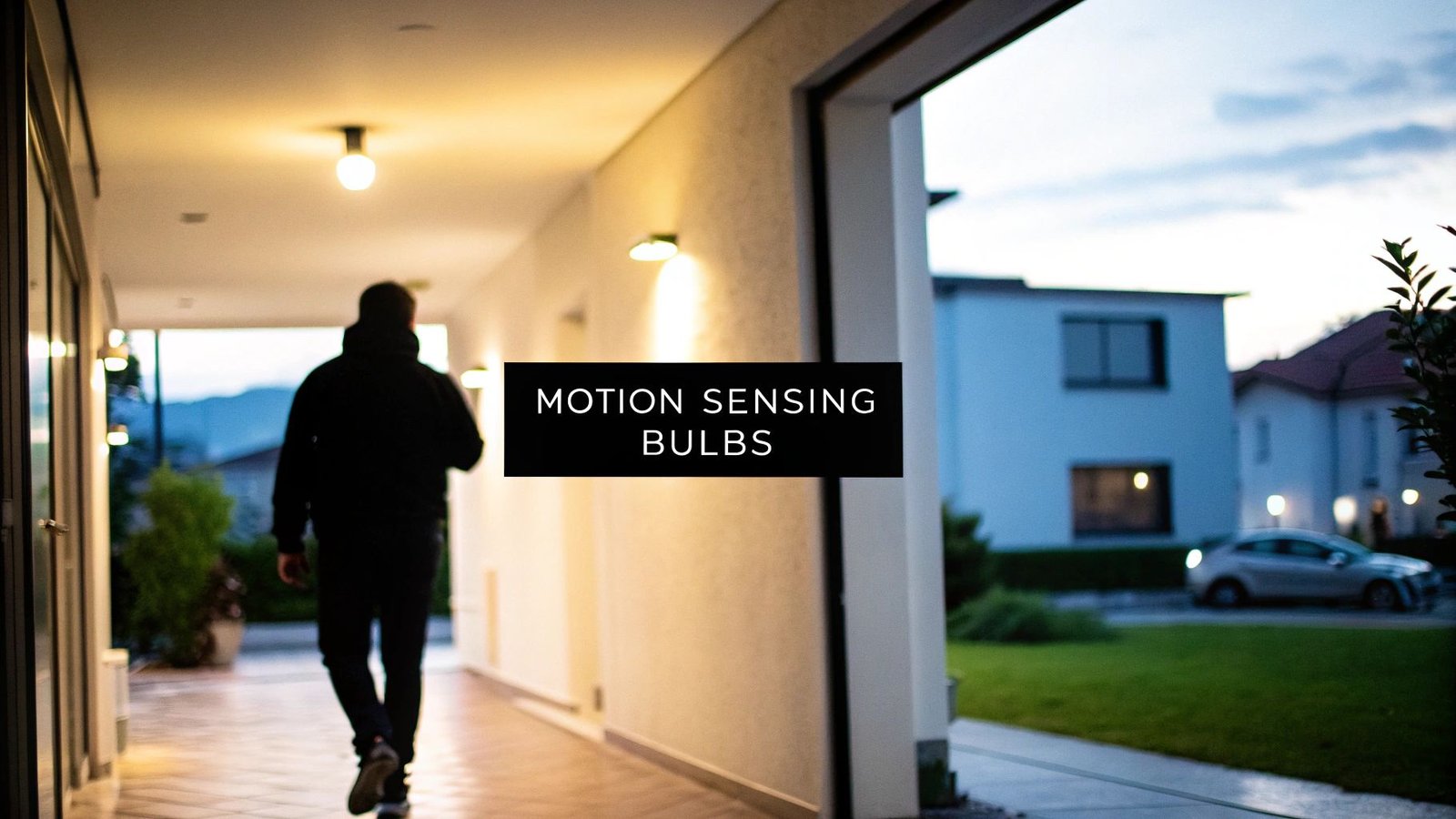
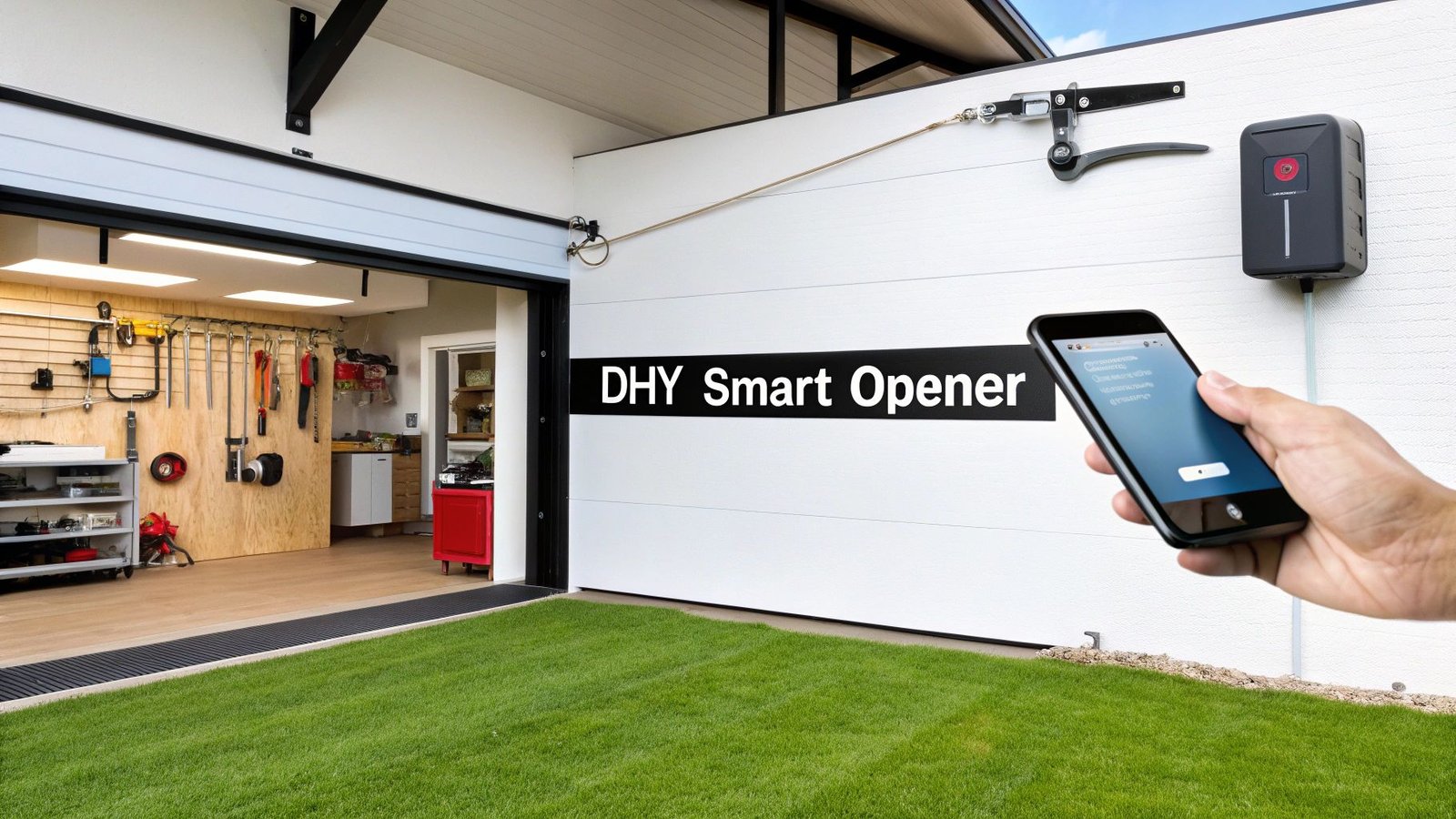
Leave a Reply to DIY Wireless Security Camera Installation Guide – Automated Home Guide Cancel reply